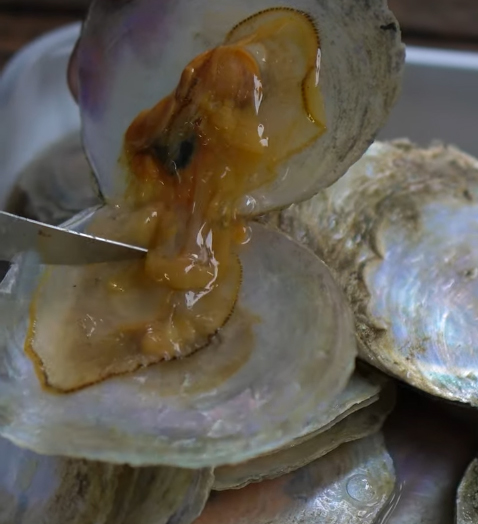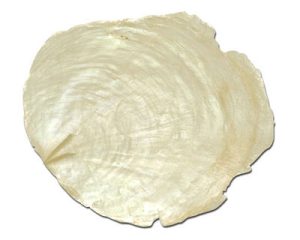The Windowpane Oyster in the Philippines – A Treasure of the Sea

The Philippines, an archipelago blessed with rich marine biodiversity, is home to a variety of unique species, one of which is the windowpane oyster (Placuna placenta). Known locally as “kapis, capiz shell” this fascinating mollusk holds cultural, ecological, and economic significance, making it a true treasure of the sea.
A Glimpse at the Windowpane Oyster
The windowpane oyster is easily recognized by its flat, translucent shell that resembles a delicate glass pane. Typically found in shallow coastal waters, these oysters thrive in the sandy and muddy substrates of estuaries and lagoons throughout the Philippines. Their shells can reach up to 25 centimeters in diameter and are celebrated for their beauty, often used in crafts and decor.
Windowpane Oyster in Filipino Culture
In Filipino culture, the windowpane oyster plays an essential role beyond its ecological contributions. The shells are harvested and crafted into various items, such as ornaments, jewelry, and even inlay for furniture. This artisanal tradition not only provides a source of income for many coastal communities but also showcases the creativity and resourcefulness of Filipino artisans.
Moreover, the kapis shell has practical uses. It is often employed in local cooking to hold and serve dishes, adding a unique touch to culinary presentations. The oyster itself can be enjoyed as a delicacy, though it is less common on menus compared to other seafood.

Capiz shell
© Author: Johnnyflex
https://commons.wikimedia.org/wiki/File:Capizshell.jpg
Ecological Role
Windowpane oysters are more than just beautiful shells; they are vital to the marine ecosystem. As filter feeders, they play a crucial role in maintaining water quality. By filtering plankton and other particulates from the water, they help promote a healthy aquatic environment. This natural filtration process is especially important in coastal areas, where pollution can threaten marine life.
Additionally, the colonies formed by windowpane oysters provide habitat for various species of fish and other marine organisms. This interconnectedness highlights the importance of conserving their habitats to support overall biodiversity.
Sustainable Harvesting and Conservation
While windowpane oysters have traditionally been harvested for their shells and meat, overharvesting and environmental changes pose threats to their populations. In response, various initiatives have emerged in the Philippines to promote sustainable practices. These efforts focus on responsible harvesting, aquaculture, and habitat restoration to ensure the long-term survival of the species.
Organizations and local communities are working together to implement sustainable fishing practices and educate others about the importance of preserving these unique mollusks. By fostering a sense of stewardship, there is hope for the continued abundance of windowpane oysters in Philippine waters.
The Future of Windowpane Oysters in the Philippines
As awareness grows about the ecological and cultural significance of the windowpane oyster, efforts to protect and promote this species are gaining momentum. The potential for eco-tourism, sustainable aquaculture, and artisan crafts based on windowpane oysters can provide alternative livelihoods for coastal communities while preserving marine ecosystems.
The windowpane oyster is a captivating part of the Philippines rich marine tapestry. With its stunning shell, vital ecological role, and cultural significance, it deserves recognition and protection. By embracing sustainable practices and valuing this unique mollusk, we can ensure that future generations continue to appreciate the beauty and importance of the windowpane oyster in the Philippines.
References:
https://en.wikipedia.org/wiki/Windowpane_oyster









